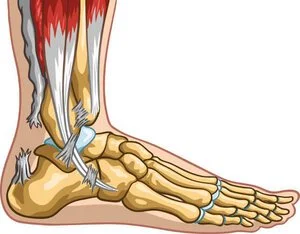Is a torn Achilles a career ending injury?
Is An Achilles Tear A Career-Ending Injury? Here’s What You Should Know
A rupture of the Achilles tendon is one of the most common tendon injuries, with incidences ranging between 7- 40 per 100,000 individuals, according to a study by the Orthopaedic Journal of Sports Medicine.
The NBA has seen a surge of Achilles tendon injuries among its star players over the years. Since 2013, athletes including Kobe Bryant, Kevin Durant, and most recently Klay Thompson, have experienced an Achilles rupture, which will force Thompson to miss playing the next season.
In the past, an Achilles tear meant that the player’s career was over, due to physical limitations, even after it had healed. But with the latest advancements in medical research and technology, athletes are now capable of recovering faster than ever before.
What Happens When The Achilles Tendon Ruptures?
The Achilles tendon or heel cord is considered the largest tendon in the human body. It serves to connect the calf muscle to the heel, allowing the foot to be bent downwards (plantarflexion). Its primary purpose is 'pushing off' to jump, run, or simply walk.
A rupture usually occurs when there is high stress or force on the tendon the moment before the injury. It can also happen if the tendon is weak, or if a person slips and falls and the foot is forced to point in an upward position.
The pain felt is sudden, and often described as a rubber band snapping at your heel, which can sometimes be seen.
With an Achilles Tendon Rupture, you might end up needing surgery, but these stretches and exercises should help you before and afterwards.
The Conservative Treatment Option Is Preferred
Two options that are available for Achilles repair are either conservative or surgical. The conservative treatment is usually the preferred option, as it comes with fewer complications. It consists of a specialized boot that holds the leg in a position that allows the tendon to heal while allowing the patient mobility.
It usually follows a set treatment schedule to provide optimum healing and recovery. Treatment time usually takes around 2.5 months, and symptoms may persist for several months before completely healing. It will also require multiple physiotherapy appointments to rehabilitate your tendon to full strength.
Surgery Is Often Necessary For Athletes
If an athlete wants to continue their career, then operative treatment may be the most-effective solution. Surgical treatment is only considered if the injury shows a delayed presentation, the tendon has re-ruptured, or an elite athlete needs to preserve their push-off strength.
However, some complications are unavoidable, such as the risk of blood clots, wound infection, re-rupture, and a decrease in strength that will most likely never return. Athletes also need months of rehabilitation and physical training to heal their injury.
Understanding Long-Term Management
Healing an Achilles tear takes months to a year, and consists of strict discipline to optimize the healing process and decrease the risk of re-injury. Athletes can minimize pain by limiting mobility and protecting the tendon from excessive weight-bearing tasks. Sudden swelling can also be managed by applying ice on the tendon for 20 minutes three times a day.
Keeping the foot elevated also helps in decreasing the swelling. When allowed, light training should also be done to constantly build up the strength in the tendon. Athletes should aim to have a proper gait and good balance control to progressively strengthen the leg and foot muscles.
With recent advancements and medical knowledge in treating an Achilles tear, recovering from an injury looks promising, with most patients able to return to their daily activities. Gradually increasing exercise and living a healthy lifestyle will have a great impact on preventing the recurrence of injuries, especially after experiencing an Achilles tear.
In conclusion: An Achilles tear is not the end
An Achilles tear is clearly one of the most severe injuries an athlete, or anyone actually, can suffer. It is extremely important to get medical attention immediately and following surgery its imperative to follow a structured and careful rehabilitation programme.
However, with the right treatment and a positive attitude, the victim can come back from an Achilles injury and push off and jump like before. The key, like with many things in life, is not to rush back.


